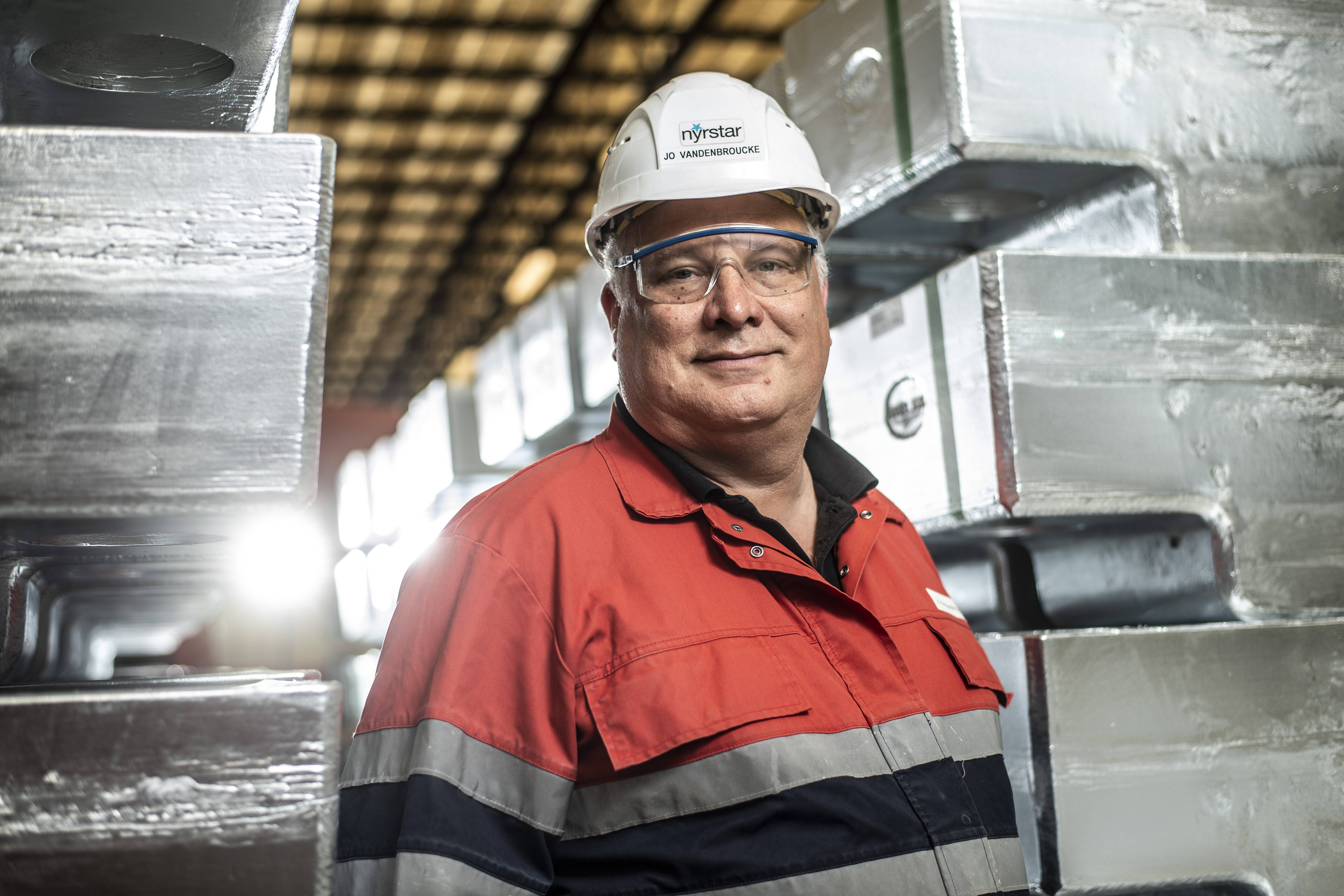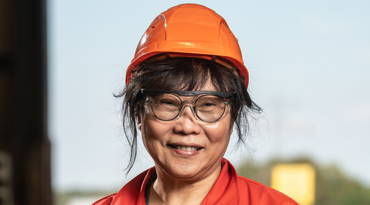During the production of zinc, valuable raw materials like lead, copper, gold and silver are also released. ‘We remove them until we are left with pure zinc. But the most important thing is that we don't let anything go to waste. We look for a destination for every metal and mineral,’ says Jo Vandenbroucke, Group Technology Manager Hydrometallurgy at global zinc processing player Nyrstar.
After steel, aluminium and copper, zinc is the world’s fourth most widely used metal. The village of La Calamine-Kelmis, near Liège, was already known for zinc mining during the days of the Romans, who alloyed it with tin to produce bronze. Calamine, the chemical name of zinc oxide, refers to this piece of Belgian history.
Our country no longer has zinc mines. The largest today are in Australia, Canada, China, Peru and the United States, and in Europe in Ireland, Sweden and Spain.
Fertiliser
The zinc concentrate that arrives via the port of Antwerp at Nyrstar's zinc plants in Belgium, the Netherlands and France is first roasted. The concentrate is burned at a temperature of 950 degrees Celsius, releasing sulphur dioxide, which in turn is converted into sulphuric acid.
‘We produce more sulphuric acid per ton of zinc concentrate than zinc. This sulphuric acid is used extensively by the fertiliser industry and in other chemical and metallurgical processes. It’s also an essential ingredient for the production of fibres, paint, rubber, plastics, steel and medicines,’ Jo Vandenbroucke tells us.
Added value
So it all starts with zinc. From it Nyrstar also extracts copper, silver, nickel and cobalt. These are processed into artificial ores and sold to specialised processors. ‘Aurubis from Beerse is a regular partner for these Nyrstar metals. One of their by-products is zinc, which we use from them. In this way, the zinc processing chain is an

The zinc by-products indium, gallium and germanium are strategically important for Europe's competitive position.
Jo Vandenbroucke,
Group Technology Manager Hydrometallurgy at Nyrstar
ecosystem of companies in which each player adds value by doing what they do best,’ Jo Vandenbroucke explains.
He points to three special by-products of zinc: indium, gallium and germanium. Indium serves as an invisible conductor in electronics such as smartphones and lamps. It’s an essential and strategic metal for the
electrification of Europe. Indium is also used for various clean energy technologies. Gallium is used extensively for solar panels, while germanium is indispensable for the production of optical fibres.
‘These are three fairly small metals that are not found in all mines. But they are strategically important because they are used in booming industries, which today are dominated by China. The processing of these by-products helps us remain competitive in Europe.’
Pure zinc metal
In the final phase of the zinc production process, zinc metal is extracted from the concentrated zinc sulphate solution by means of electrolysis. ‘The resulting zinc metal is of excellent quality and is resold to customers for manufacturing their end products,’ Jo Vandenbroucke points out.
More than half of all zinc production is used to galvanise steel, which means the galvanised steel does not rust and lasts up to twelve times longer. Another important application of zinc is injection moulding, whereby molten zinc is injected into a steel injection mould.
‘Zinc expands during solidification, filling the mould cavities perfectly and requiring little to no post-processing. That makes this process ideal for mass production; typical examples are car parts, hinges or zippers,’ Jo Vandenbroucke explains. Other major consumers of zinc are the rubber, paint and cosmetics industries, and it is also often added to animal feed.


